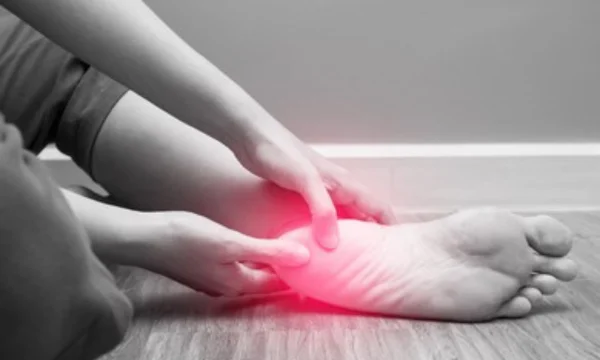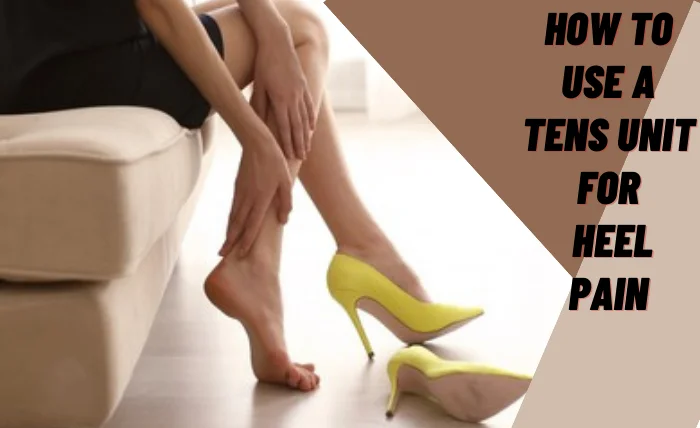If you’re grappling with heel pain, a TENS unit might be the solution you’re searching for. This simple, non-invasive device could be your key to unlocking relief and regaining your mobility. Imagine stepping out of bed in the morning without that familiar twinge of pain.
Our guide is here to show you how, with clear, straightforward advice on using a TENS unit effectively for heel pain. Get ready to explore a pain management technique that’s easy to implement and backed by countless success stories. Let’s embark on this journey together towards a more comfortable step.
Heel Pain Unlock Relief with a TENS Unit

Common Causes of Heel Pain
Heel pain often stems from conditions like plantar fasciitis and heel spurs. These issues arise from strain and inflammation in the foot’s structure. Recognizing these causes helps tailor your TENS therapy effectively.
How TENS Therapy Can Help with Heel Pain
TENS therapy targets pain by sending electrical pulses through the skin. These pulses interrupt pain signals, reducing discomfort. For heel pain, TENS offers a drug-free method to manage symptoms and improve mobility.
Preparing to Use Your TENS Unit
Safety first. Ensure the skin around your heel is clean and dry. Avoid using the unit over broken skin or if you have heart problems without consulting a doctor. Start with low settings and adjust as needed for comfort.
Choosing the Right TENS Unit
Select a TENS unit that fits your needs. Look for one with adjustable settings to control the intensity of the electrical pulses. A portable unit is a good choice for ongoing management of heel pain.
TENS Unit Settings
Learn about pulse width, frequency, and intensity settings. Pulse width affects the duration of each pulse. Frequency determines how often pulses are delivered. Adjust the intensity to a comfortable level where you feel tingling but no pain.
Correct Pad Placement for Heel Pain Relief
Place the pads near the pain area but not directly on bony parts of the heel. Experiment with placements to find the most relief. Ensure the pads fully contact the skin for the best results.
TENS Unit Pad Placement for Heel Pain
Proper pad placement is key for relieving heel pain. Place pads around the painful area, avoiding direct placement on bony parts of the heel.
Diagrams and Descriptions of Effective Pad Placements
Visual aids can help you position pads optimally. Typically, placing one pad on the bottom of the foot and another above the heel works best.
Tips for Maximizing Pain Relief
- Avoid placing pads on calloused areas to ensure good contact.
- Clean the skin before pad application for better conductivity.
Alternating Pad Positions to Prevent Skin Irritation
Move pads slightly during each session to avoid skin irritation. This strategy helps maintain skin health and comfort during treatment.
Adjusting TENS Settings for Maximum Relief
Finding the right settings on your TENS unit is crucial. Start with lower intensity and gradually increase to find a comfortable level that effectively reduces pain. Adjusting the pulse width and frequency can also help target your specific pain points more accurately.
Combining TENS Therapy with Other Heel Pain Treatments
Enhance your TENS therapy by incorporating additional treatments. Stretching exercises can improve flexibility, applying ice can reduce inflammation, and wearing supportive footwear can alleviate stress on your heel. These combined methods can significantly improve your pain management strategy.
When to Use Your TENS Unit
Timing is important for effective TENS therapy. Use the unit during periods of rest to maximize its effectiveness. Short, frequent sessions are often more beneficial than long, infrequent ones. Experiment to find the best duration and times of day that offer you the most relief.
Bottom Line
Effectively using a TENS unit can greatly alleviate heel pain, enhancing your quality of life. By understanding the causes of heel pain, such as plantar fasciitis and heel spurs, and applying TENS therapy correctly, you can unlock significant relief. Key strategies include choosing the right unit, mastering TENS settings, and placing pads properly.
Combining TENS therapy with stretching, ice, and supportive footwear further optimizes healing. Remember, the goal is to make “how to use a tens unit for heel pain” a seamless part of your pain management routine.

